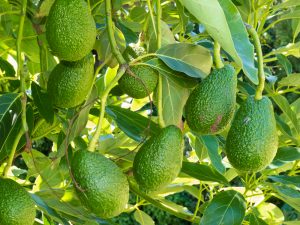Prior to a storm, it is recommended that avocado growers have a tree-size management program in place. The purpose is to ensure trees are not getting too tall or too wide. Trees that have been maintained at the proper size are easier to pick, easier to spray and are much more efficient economically and physically to harvest.
Jonathan Crane, tropical fruit crop specialist at the University of Florida’s (UF) Tropical Research and Education Center in Homestead, recently spoke about storm preparation and recovery for tropical fruit groves. He gave a presentation at a U.S. Department of Agriculture Southeast Climate Hub and UF workshop called Building Agricultural Resilience to Hurricanes: Before, During and After.
There’s a couple of reasons why Crane suggests having a size management program in place. “We’ve seen in avocados that have been grown in Florida, if you control the size of the tree and don’t let it get too tall, it will remain intact in the grove during strong winds,” explains Crane. “If you let avocado trees get too tall, they’ll either fall over, be pulled out or just be broken up. Managing tree size is really the key to surviving and then recovering.”
After a hurricane, some trees will fall over, and some will be destroyed. The trees that are left standing will more than likely have limb damage that will need pruning. “It’s important to leave any canopy that’s still alive and repair those trees that need it. This will help the trees recover much more quickly,” says Crane. “You’ll be back in production with mature trees, depending on the variety, in two to three years, whereas if you have big trees and they’ve all fallen over, it may take longer.”
Assessing which groves are the most valuable economically and which groves are easiest to fix are important factors to consider prior to a hurricane. “Before standing up the fallen-over trees, go in and cover up the exposed trunks and the limbs with shade. If you’ve had trees that are fallen over, go in and remove some of that canopy … You actually lay it down on top of the trunk and the limbs to provide shade to protect the trees from sunburn. Sun exposure will kill the trees’ tissue,” says Crane. “Even if you do pull that tree back up and get it going, the side of the tree that was exposed may die and never recover, giving you a weak tree.”
While preplanning for hurricanes, Crane says it’s also important for growers to consider their staff. “If your staff has to stay and take care of their family and house, they’re not going to be helping you. The sooner you can help get them up and running and safe, the sooner they’re going to be back helping you putting your property back in place,” Crane concludes.
Share this Post
Drought Monitor Update: Dry Areas Remain Prevalent Across Southeast
January 6, 2026South Florida Pest and Disease Hotline: Whitefly Update
January 6, 2026Cost Reduction Key in Watermelon Production
January 6, 2026Sneak Peek: January 2026 Specialty Crop Grower Magazine
January 2, 2026










